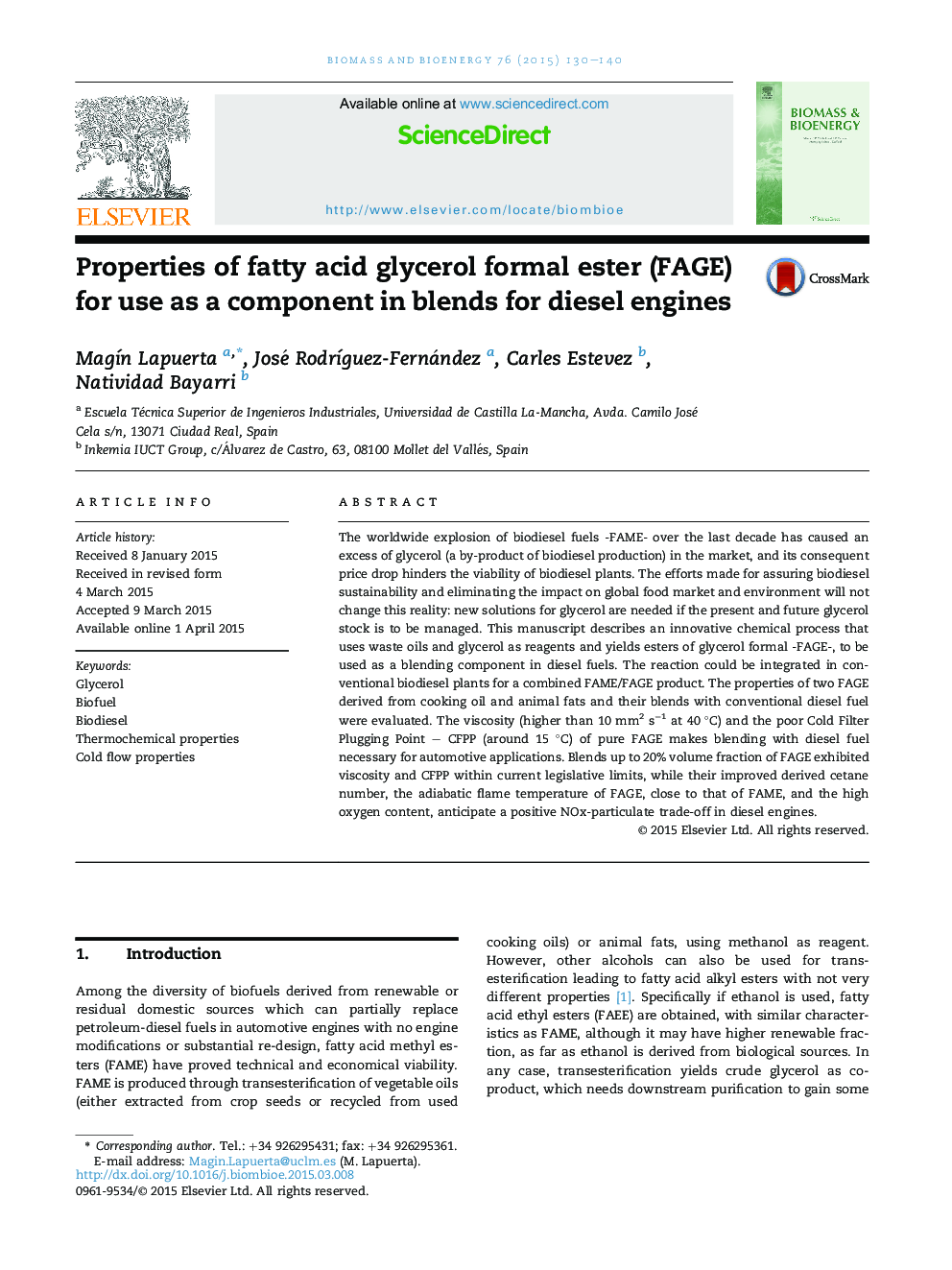| Article ID | Journal | Published Year | Pages | File Type |
|---|---|---|---|---|
| 676796 | Biomass and Bioenergy | 2015 | 11 Pages |
•A new biofuel derived from waste oils and crude glycerol as feedstock is proposed.•Blends up to 20% volume show acceptable properties for automotive diesel engines.•Differences between tested feedstocks (used cooking oil or animal fat) were minor.•Thermochemical properties were estimated and validated experimentally.•Cetane, adiabatic temperature and oxygen content suggest good emission trade-off.
The worldwide explosion of biodiesel fuels -FAME- over the last decade has caused an excess of glycerol (a by-product of biodiesel production) in the market, and its consequent price drop hinders the viability of biodiesel plants. The efforts made for assuring biodiesel sustainability and eliminating the impact on global food market and environment will not change this reality: new solutions for glycerol are needed if the present and future glycerol stock is to be managed. This manuscript describes an innovative chemical process that uses waste oils and glycerol as reagents and yields esters of glycerol formal -FAGE-, to be used as a blending component in diesel fuels. The reaction could be integrated in conventional biodiesel plants for a combined FAME/FAGE product. The properties of two FAGE derived from cooking oil and animal fats and their blends with conventional diesel fuel were evaluated. The viscosity (higher than 10 mm2 s−1 at 40 °C) and the poor Cold Filter Plugging Point – CFPP (around 15 °C) of pure FAGE makes blending with diesel fuel necessary for automotive applications. Blends up to 20% volume fraction of FAGE exhibited viscosity and CFPP within current legislative limits, while their improved derived cetane number, the adiabatic flame temperature of FAGE, close to that of FAME, and the high oxygen content, anticipate a positive NOx-particulate trade-off in diesel engines.
